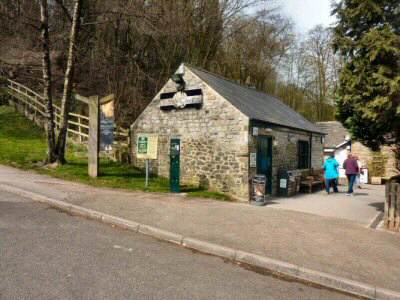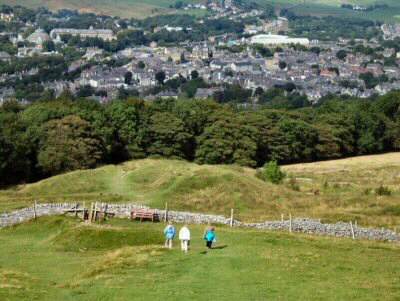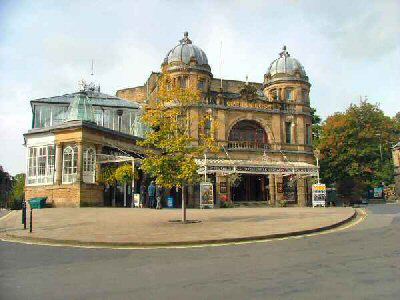BUXTON

PLAN YOUR DAY OUT
Location: The A6 from Matlock/Chapel-en-le-Frith passes through Buxton (SK060735)
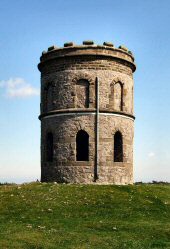
Visit: The Pavilion Gardens, a Grade II listed park covering 23 acres of superbly landscaped gardens in the centre of the town. Explore the magnificent underground chambers of Poole’s Cavern, ‘The First Wonder of the Peak,’ and witness first-hand the incredible stalactites, stalagmites, and crystal flowstone that have earned the showcave the title of ‘most spectacular cavern in Derbyshire.’ – Looking down on Buxton from the southern side of the town is Grin Low, an attractive area of woodland and upland grassland, which is now a popular country park. The focal point is Solomon’s Temple, where you can climb the spiral staircase to the viewing platform and enjoy a splendid view of Buxton and the surrounding area.
Refreshments: The Pavilion Gardens, newly refurbished Café and Art Café. The town also has many other cafes, pubs and restaurants to suit all tastes.
Walk: Castleton Caverns Walk offers magnificent views, a Norman Castle, four of Europe’s most spectacular caverns, and a historic village. Cave Dale is one of the most beautiful parts of Castleton. At the start of the walk, cliffs rise almost perpendicular, with Peveril Castle towering above.
Special Places of Interest in the Locality: Castleton, frequently called the gem of the Peak, is one of Britain’s most appealing villages in a magnificent location with fantastic views in all directions. – The ruggedly picturesque Goyt Valley, surrounded by heather-clad moors, has been a popular place for visitors since Victorian times. The valley’s appearance changed dramatically in the 1930s when the Fernilee Reservoir was built and, some thirty years later, the Errwood Reservoir. Now, the reservoirs provide leisure facilities in a valley rich in industrial heritage and wildlife. – Axe Edge Moor is a wild, bleak expanse of land southwest of Buxton. Covered in heather and peat, it is the source of the River Dove, River Manifold, River Dane, River Wye and River Goyt. The moor is shared between Cheshire, Derbyshire and Staffordshire counties, which meet on its southwestern flank at Three Shire’s Head, the meeting point of four pack-horse trails.
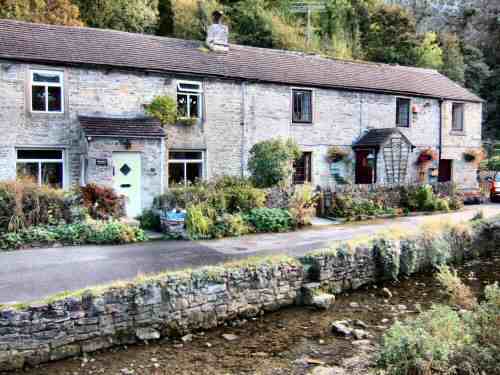
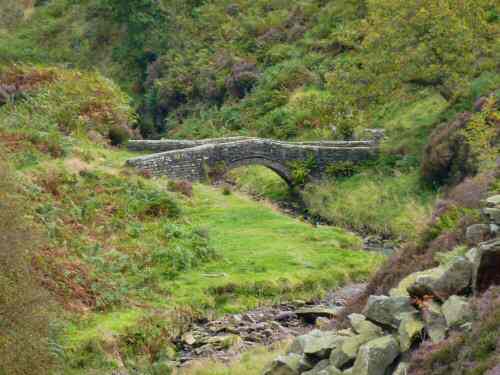
INTRODUCTION
Visitors arriving in Buxton for the first time from the bleak moorlands cannot be blamed for pinching themselves in disbelief as they emerge into a town with fine parks and grand old buildings. At well over 1,000 feet above sea level, Buxton is the highest town in England for its size.
The marketplace is in Higher Buxton, the older part of the town that rests on a small limestone plateau. Lower Buxton, the newer part, nestles in a river valley. The river, the Wye, does the disappearing trick, being culverted under the town centre before emerging on the far side. Buxton is a northern town at the southern end of the Pennine Chain, but county boundaries place it in the Midlands.
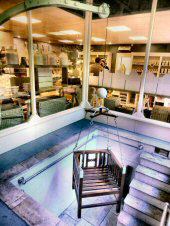
THERMAL SPRINGS
Buxton has grown to its present size mainly due to the thermal springs it stands on, from where the water rises at a constant temperature of 82°f (28 °c). According to the British Geological Survey findings, the water that emerges fell as rain over five thousand years ago. On its way to the surface, the water filters through a bed of ancient limestone, finally reaching the light of day pure and crystal clear.
Buxton might have rivalled Bath as England’s most prominent spa town, given a more equable climate. Even these days, when snow clearance is so much more sophisticated, we often hear of major roads being blocked, leading to Buxton. It is not just during winter that the town has been in the news for snowfall. On 2 June 1975, snow prevented play in the county cricket match between Derbyshire and Lancashire at Buxton! But the harshness of the winter must not be overemphasised, as the climate is getting milder. Whatever the environmental problems created, it has not stopped Buxton from becoming one of the leading inland resorts in England, worthy of a visit at any time of the year.

EARLY SETTLERS
There is evidence of prehistoric settlers in the caves around Buxton, but the Romans made the first real impact on the area. Precisely when they settled in Buxton is uncertain, but it was around AD78 when forts were established nearby at Navio and Melandra. Attracted by the warm springs, they built a large bath on the same site where St. Ann’s Hotel now stands.
A small shrine was built in about 1200 and dedicated to St Anne, the patron saint of cripples. People hoped the waters would cure them, but Henry VIII ended such ‘idolatry and superstition’ and locked the baths and wells up and sealed them. They were reopened in Elizabeth I’s reign and attracted royal patronage in the form of Mary, Queen of Scots.
On the reopening of the wells, the infirm resumed their pilgrimages. The captive Mary, Queen of Scots, hoping to cure, or at least alleviate, the pain from her rheumatic-ridden body, managed to persuade Queen Elizabeth I to allow her to visit. She spent many months captive in the Peak under the watchful eye of the Earl of Shrewsbury. Between 1570 and 1584, she was allowed to visit Buxton several times for further treatment.
THE DUKE OF DEVONSHIRE
It was in the 1780s that Buxton came to prominence as a spa. The fifth Duke of Devonshire, using the profits he had made from his copper mines at Ecton in the Manifold Valley, embarked on a costly campaign to attract and accommodate more visitors in what was then only a tiny Peakland village.
The duke recruited the eminent northern architect John Carr to build the Crescent, which was modelled on the Royal Crescent at Bath. The Crescent provided hotel accommodation, a house for the duke, card and billiard rooms, and elegant Assembly Rooms approached by a distinctive curved staircase. The arcades were used for shopping. In recent years, the Royal Crescent has been magnificently renovated.
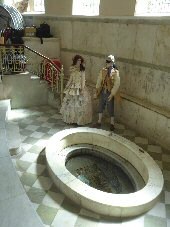
PUMP ROOM
The Pump Room opposite the Crescent was where visitors used to sit and drink the water. At the rear, the drinking fountain is very popular, and people can often be seen filling plastic containers to take away. The Slopes, laid in a series of graded paths, were initially intended for exercise for those coming to the spa for treatment. From the top, they provide an excellent view of the Crescent and the buildings beyond.
DEVONSHIRE ROYAL HOSPITAL
The Great Stables, which housed the Devonshire Royal Hospital until recently, are remarkable. Erected on slightly higher ground to the rear of the Crescent, they were home to horses and their grooms. The two-storey octagonal building was arranged around a circular exercise yard with the perimeter collonaded to give a covered ride in bad weather. The central exercise yard was covered by what, at the time, was the largest unsupported dome in the world. The University of Derby now occupies it.
BUXTON OPERA HOUSE
Buxton Opera House, designed by Frank Matcham in grand Edwardian style, was completed in 1905. But just over twenty years later, it was converted into a cinema. After a period of disuse, it was lovingly restored in 1979 and reopened as an opera house. The Buxton International Festival of Music and Arts was born in the same year, and it has developed into one of this country’s largest opera-based festivals.
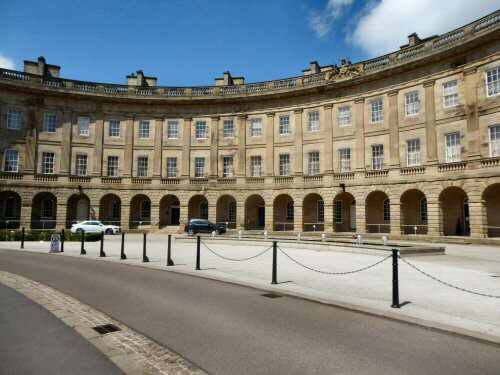
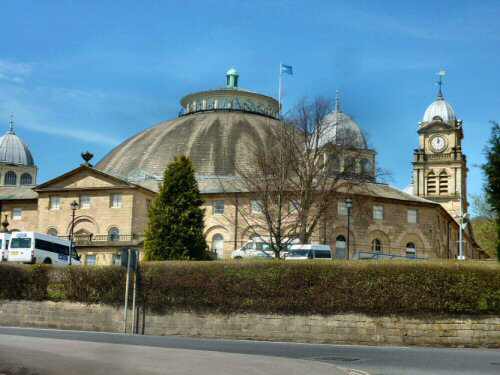
TEN FASCINATING FACTS ABOUT BUXTON
1. The Pavilion was built, and the Gardens were laid out in 1871 along the banks of the River Wye, where you can relax or even join the children on a miniature train ride.
2. The Conservatory is at the side of the Opera House, housing native and tropical plants.
3. Close by is the highest village in England, Flash, the highest railway station, Dove Holes, and Britain’s highest-altitude whisky distillery, the Cat and Fiddle. Before its closure in 2015, it was the second-highest public house in Britain.
4. An old Roman milestone was discovered at Silverlands in 1862 and was kept in Buxton Museum and Art Gallery before its closure. It shows the mileage to Navio, the Roman fort at Brough.
5. Buxton Museum and Art Gallery has been a past winner of the Best Archaeological Museum of the Year award. It is permanently closed while further developments are awaited.
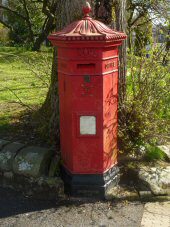
6. The Midland Railway from Derby arrived in 1863, and the London and North Western Railway from Manchester one year later, making the town more accessible to tourists.
7. Poole’s Cavern, on the southwestern outskirts of the town, is a large natural cave once used by the Romans and prehistoric humans. It is open to the public and shares a car park with Go Ape.
8. Above Poole’s Cavern is Grin Low Country Park, where rare species of wild plants, including field orchids, can be found, which resulted in it being awarded a Site of Special Scientific Interest Status. At the top of the hill, Solomon’s Temple was built in 1896 by Solomon Mycock to give work to some of the unemployed in Buxton. The Victorian folly stands on the site of a Bronze Age burial mound.
9. Opposite the Opera House is a hexagonal Victorian letterbox. It was erected in 1867 and bears the cypher of Queen Victoria.
10. Buxton Festival is a summer celebration of the best opera, music, and literature; Buxton Festival Fringe, one of the largest fringe festivals in the country; Buxton Well Dressings; and the International Gilbert and Sullivan Festival take place in the town.
BUXTON AND GRIN LOW WALK
